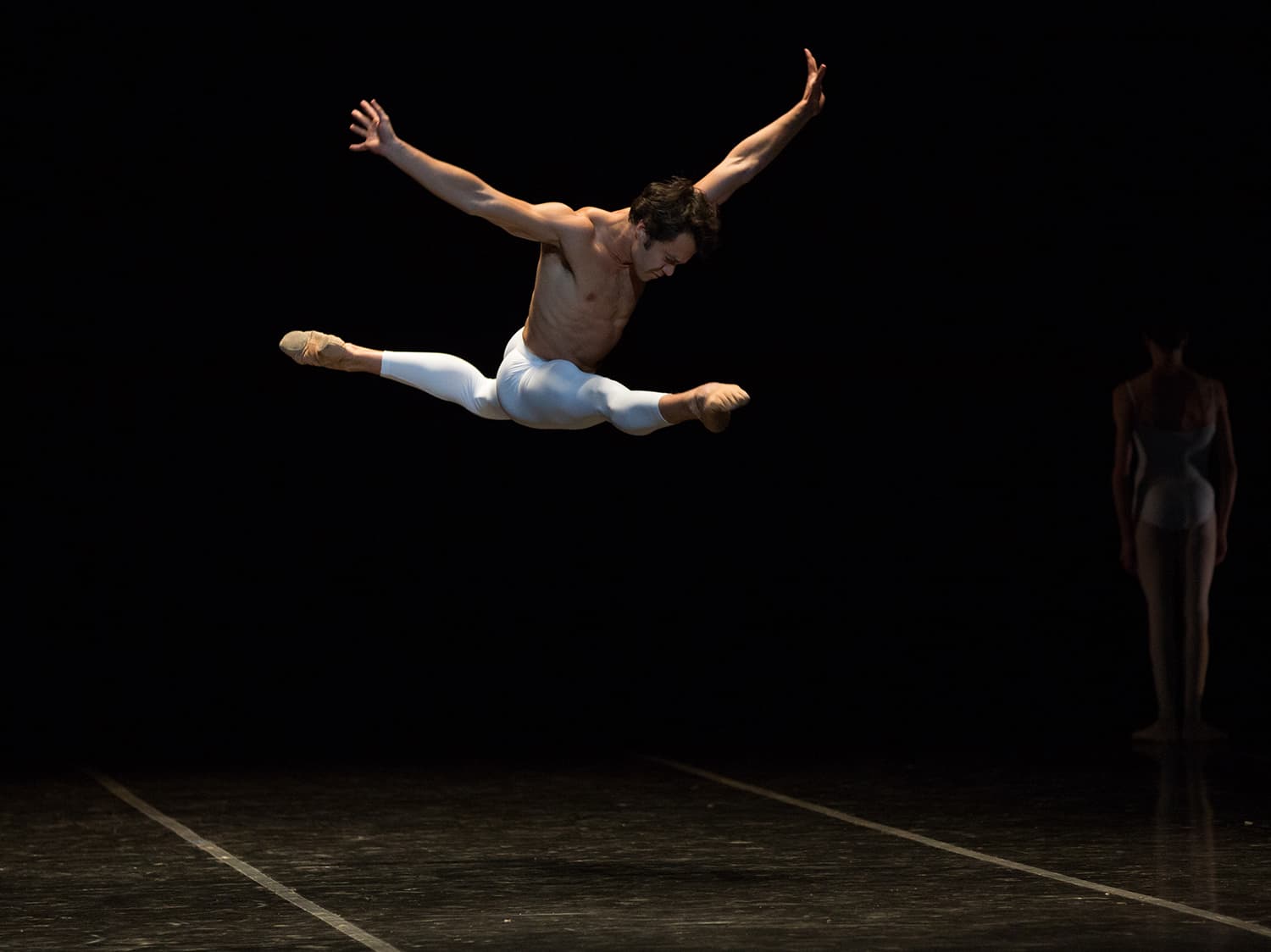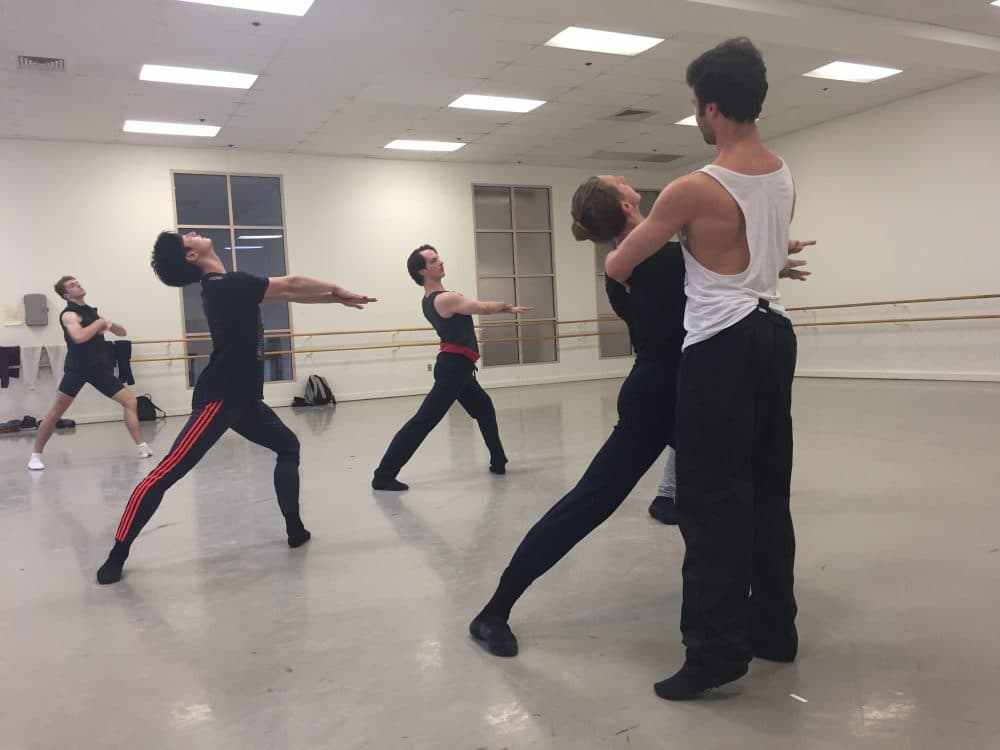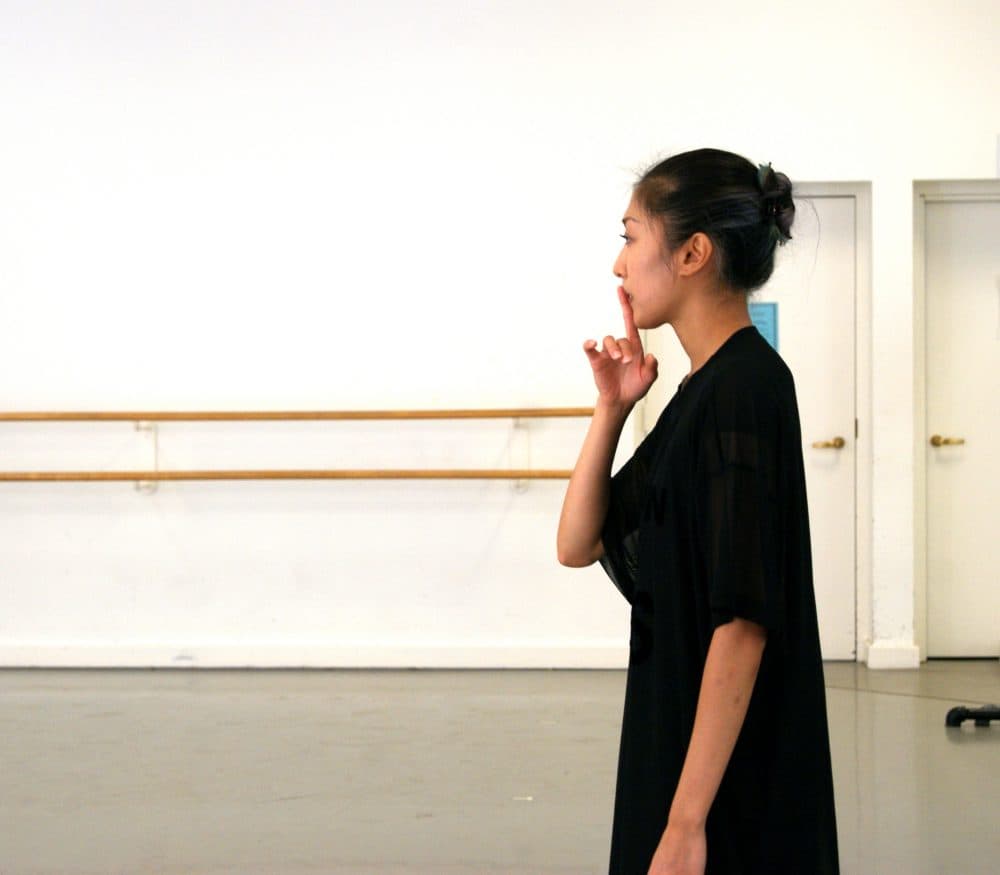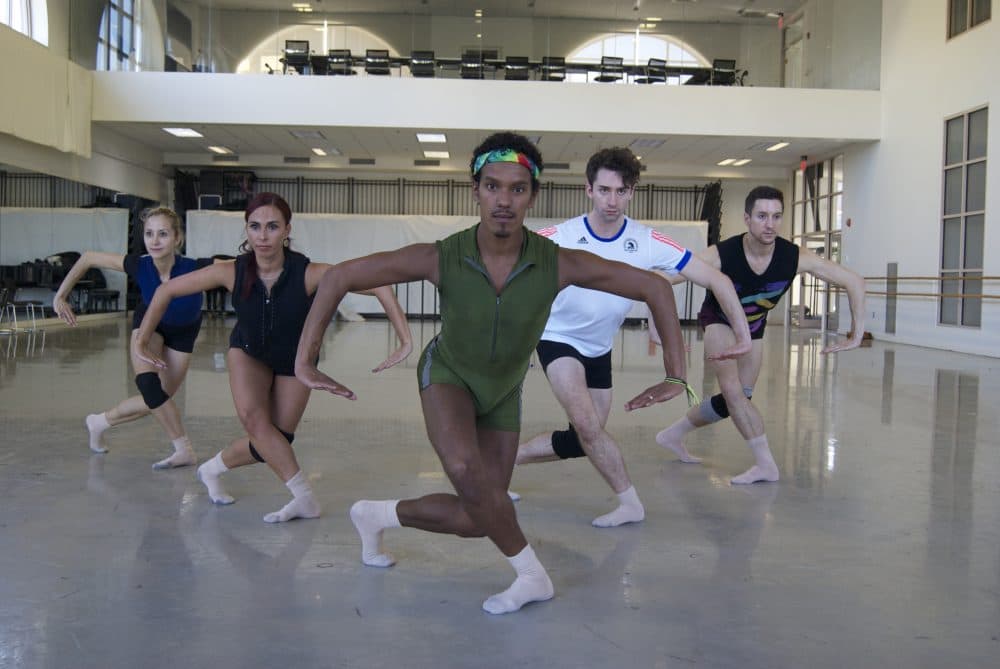Advertisement
Boston Ballet Dancers Take On Choreography In BB@Home

If a picture is worth a thousand words, how does one measure the value of an image translated into motion and performed live onstage?
A simple movement has the ability to paint a perspective on life that touches each person in the audience individually, if one allows it. That’s the power of dance, the power of a choreographer.
Over the last few weeks, six Boston Ballet dancers — Paulo Arrais, Isaac Akiba, Roddy Doble, Florimond Lorieux, Reina Sawai, and Matthew Slattery — have stepped into this role, addressing complex themes of love, unity and the impact of technology through their own creations. Their choreographic works, featuring fellow company members, will premiere this week (Thursday, Oct. 5 and Friday, Oct. 6) in “Dancer/Dance-makers,” the first BB@home program of the season at the Clarendon Street studios.
“I think it’s just so important to wear the choreographer’s shoes, the ballet master’s shoes and to think differently, think from the other side,” said principal dancer Paulo Arrais in a phone interview. “It’s been full on growth. I wouldn’t say even as an artist, but as a person.”
Communication, he explained, requires a different approach when asking others to bring his personal concept, an introverted vision, to life while simultaneously using the freedom to make his material their own. Arrais prefers the creative process to be a collaborative effort among his dancers, a characteristic he attributes to working with like-minded choreographers such as Boston Ballet’s Jorma Elo and Alonzo King of San Francisco-based LINES Ballet, where Arrais previously danced. “It would be so easy for me to be like, ‘Do it like me,’ but I think that’s a poison for creation,” he said. “That’s shutting down artists in a box.”
His piece, “Castle,” which is the first movement of what may become a longer work, is an abstract documentation of his journey in Boston since joining the company in 2010. “I come from a very homophobic and hypocritical country,” he said of his native Brazil. “When I came here, I met this group of straight friends that was extremely friendly to me and affectionate in a way. There was no discrimination.”
Also inspired by today’s political climate, the work encourages togetherness and acceptance, and his cast of interracial, cross-cultural male dancers — Paul Craig, Matthew Slattery, Desean Taber, Junxiong Zhao — is intended to make a statement in itself. The four men reveal their individuality in short solos that intersperse their work as an ensemble, dancing in unison and partnering each other through series of leans and lifts.

Their cohesiveness as a quartet creates a strikingly powerful image. “We are going through an aggressive time for us to change, for us to become one,” Arrais said. “If I have a platform to say something, I think it would be a shame if I don’t.”
This is not the first time Arrais has approached the realm of choreography. In fact, he has been creating since 2011 when he made a pas de deux for himself and former Boston Ballet dancer Whitney Jensen, who is now with the Norwegian National Ballet.
Recently, he was awarded a grant from the New York Choreographic Institute that allowed him to extend his rehearsal time. Even still, “Castle,” named after what his friends called their South End brownstone, may not be finished for a while. There is not a definite plan or timeline, Arrais said, but he envisions this piece to eventually develop into a larger project.

Unlike Arrais, corps de ballet member Reina Sawai, who is in her second season with Boston Ballet, will be choreographing for the first time. She has used this opportunity to examine the increasing authority that technology has in society and its overbearing affect on people’s relationships.
The name of her piece, “54448 #5,” takes after the title of its music — Nosaj Thing’s electronic track “Light #5” — but light is spelled in code according to the numerals on a cell phone’s dial pad. From calling and texting to social media and the numerous apps available, people face constant distractions that weaken our ability to connect with others, Sawai explained.
“Somehow, technology is making us into soulless, robot-like creatures,” Sawai said in a phone interview.
Born in New Zealand, Sawai lived in Japan, Hong Kong and the Philippines all before the age of 12 because of her father’s job. At 24 years old, after dancing with the National Ballet of Portugal and the Vienna State Ballet, she took time off from her professional career and worked at a beach resort in Indonesia and Egypt before returning to Japan to prepare for auditions. At this time, she also broadened her skill set, studying jazz, contemporary and even hip-hop dance, something she continues to do on the weekends in Boston if she has the time and energy.
“I’ve always had an interest in other genres of dance, but that was the first time I could actually push myself to try and do it,” Sawai said. “That was very eye opening.” Her contemporary piece has a slight hip-hop influence with jarringly sharp isolations that distort the body’s natural lines.
Not only is Sawai determined to expose the audience to other forms of movement, she, like Arrais, has decided to challenge the idea of a typical partnership in dance. The second cast of a pas de deux in her work will feature two men, instead of a male and a female. This decision, she said, stems from growing up in a traditional Japanese family where her father would insist upon maintaining customary gender roles.

“We’re living in a world where sexual identity and orientation are being questioned out loud and being brought more into the spotlight and media,” she said, “and the lines between men and women are beginning to blur slightly. Men don’t have to always be masculine and women don’t have to be feminine either. I think it’s important for the dance world to address that.”
Dance has the capability to present social issues openly and honestly without confrontation, without resentment, and without force. What one sees and how one feels, especially with abstract movement, is interpreted within one’s self. The movement simply brings emotions associated with such topics to light.
That’s the power of dance, the power of a choreographer.
